Before the New iPhones Launch, See How Much They’ve Evolved Since 2007
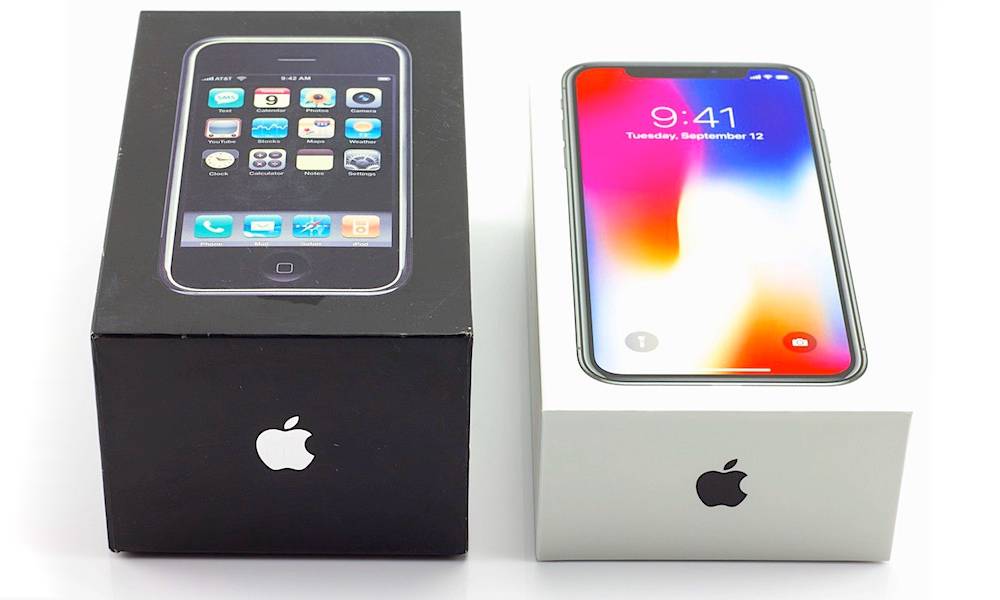 Credit: Spider-Mac
Credit: Spider-Mac
Ten years ago a man named Steve in a black mock turtleneck shirt, New Balance sneakers, and round frameless spectacles, took the stage at Macworld to introduce us to three "new products". A Web communicator, an iPod, and a phone. But these weren’t three separate devices, it was one device that did it all (and boy was it patented).
Apple marketed it as the “ultimate digital device” and “your life in your pocket.” They called it iPhone and people around the world referred to it as “the Jesus phone.” A lot has happened over the past decade, and the iPhone has paved the way for billions of people to carry their life around in their pocket.
Fast forward to today where Apple’s asked us to “say hello to the future” with iPhone X — the “best friend” in your pocket — and if history repeats itself, 2018 will continue to deliver on the 2007 promise of your pocketed life.
But what’s changed over the past 10 years? How has the iPhone of today evolved from the original all-in-one device? With new iPhones just around the corner, now is the perfect time to take a look what ten years of innovation and design look like. Continue reading to see how much the iPhone has evolved since 2007!
12 iPhone
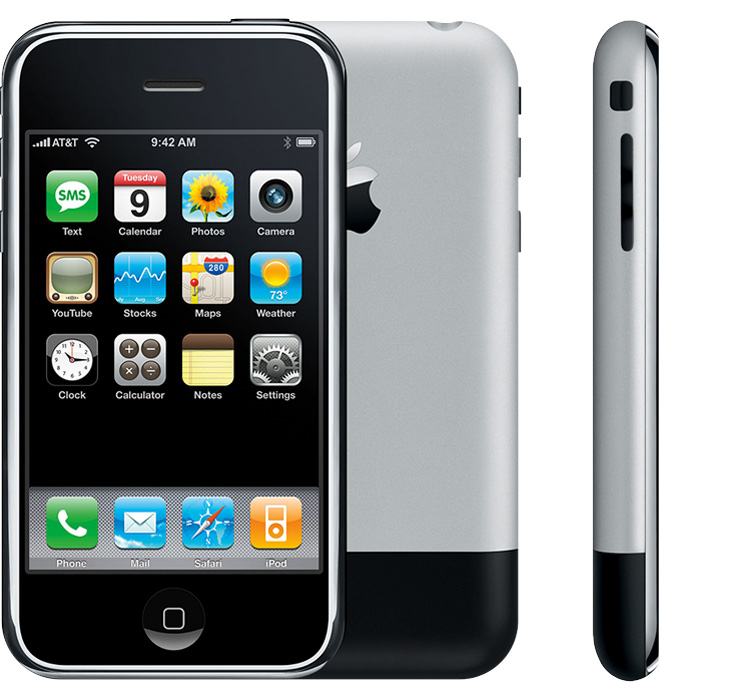
The original iPhone was an instant game changer. It was the phone every geek had dreamed of in a sleek, stylish design that attracted anyone with a cell phone.
Defining Features
Multi-touch, wireless communications, accelerometer, and proximity and ambient light sensors.
About iPhone
Rumors of an iPhone had been circulating for years as it seemed like the natural next step from iPod. But this was so much more. This was a glass and aluminum revolution that fit in the palm of your hand.
Goodbye clunky keyboards. Hello Multi-Touch. A stylus? Yuck. The camera quality was okay. No 3G. But Wi-Fi just got a lot more interesting. Entertainment? Check. Maps? Check (but no GPS). Internet? Yup. Wait… it’s not a WAP browser! But… no apps? I mean, it had Web apps (if you’re into that sorta thing).
Okay. So the first iPhone was far from perfect. But it brought so much to the table in such a beautiful way that from the moment Steve Jobs pulled it from his pocket, one thing was for certain: cellphones would never be the same.
iPhone Introduced
- 3.5” capacitive, multi-touch display (163 ppi)
- iPod library that synced with iTunes
- A (better) Web browser
- 2 MP camera
- Mono loud speaker, receiver speaker, and microphone
- Headphone jack (recessed)
- Second-generation cellular support
- Wi-Fi
- Bluetooth 2.0
- Flash storage (4, 8, or 16 GB)
- 3-axis accelerometer (for display orientation)
- Ambient light sensor (for automatic backlight dimming)
- Proximity sensor (to turn off display when the phone is up to a user’s ear)
- Location tracking via Wi-Fi and cellular (no satellite)
- Maps (Google Maps)
11 iPhone 3G
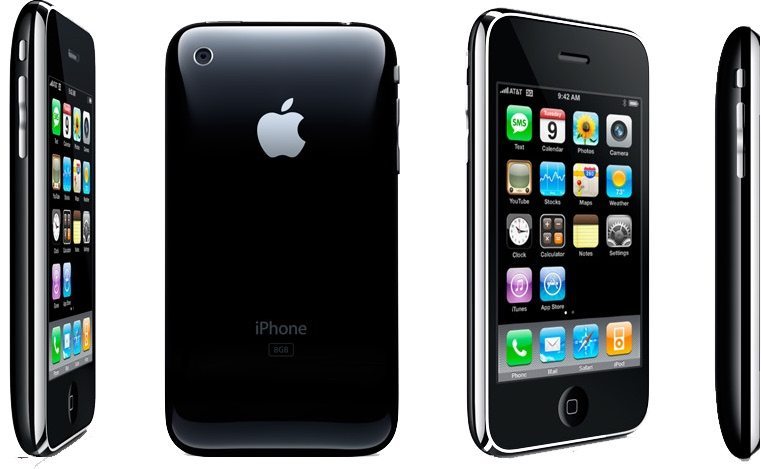
The next generation iPhone traded in its aluminum exterior for a shiny polycarbonate shell. It had support for 3G networking and GPS. It introduced the App Store.
Evolutionarily Features
Support for 3G networking and GPS.
About iPhone 3G
Regarding internal hardware, the next iPhone was almost identical to the original iPhone when it came to processing power, battery life, and its camera. However, like its name suggests, iPhone 3G was the first iPhone to support 3G cellular networking. It was also the first iPhone with GPS. But, that’s not all. Apple decided to listen to its customers and give the people what they wanted most: An App Store.
Apple marketed it as “the first phone to beat the iPhone.” The iPhone 3G came in two colors (black and white) and was priced at $199/$299 (half the price of the original iPhone $399/$499).
iPhone 3G Introduced
- Third-generation cellular support
- GPS
- The App Store
- Color options (black and white)
- A non-recessed headphone jack
10 iPhone 3GS
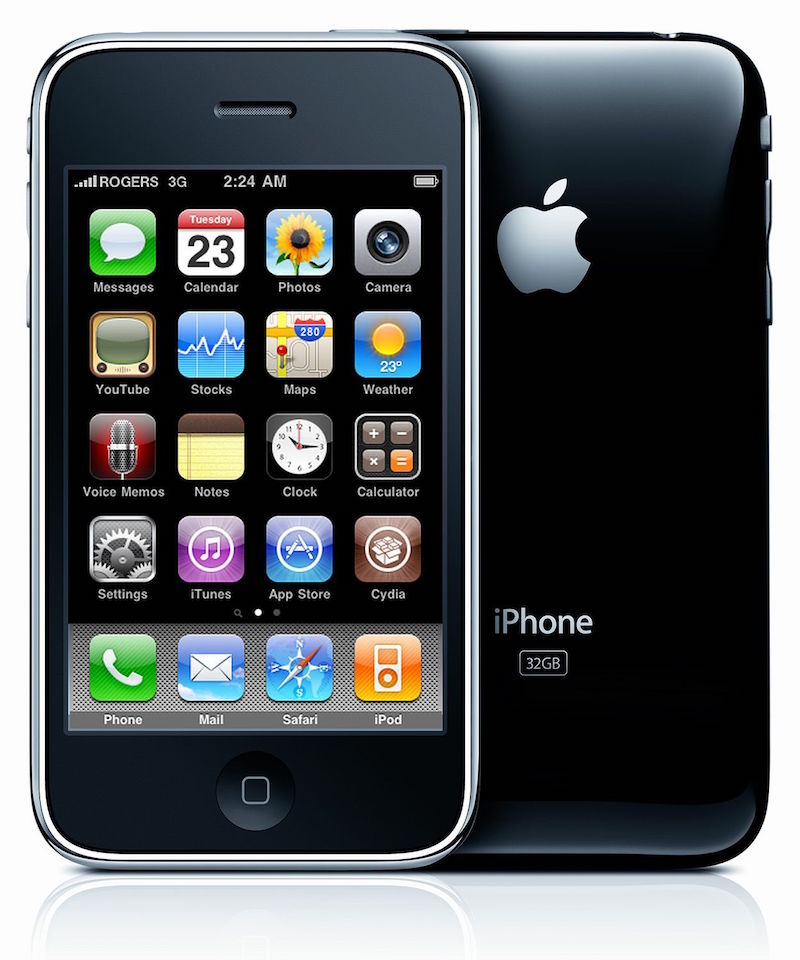
The iPhone 3GS built upon its predecessor, adding better performance in the same plastic chassis.
Evolutionary Features
Voice control, magnetometer, and oleophobic-coated glass.
About iPhone 3GS
While the iPhone 3G was the iPhone we all waited for, it was a bit of a letdown when it came to performance. Phil Schiller told the keynote launch audience that the “S” stood for speed. The iPhone 3GS was up to twice as fast as the previous generations.
Additional improvements included an improved camera (3 MP with tap-to-focus and video recording capabilities), faster cellular data, and improved Bluetooth. The 3GS was also the first iPhone with voice control (spoiler alert: Siri would be introduced later). It was also the first phone to include a magnetometer to enable a new Compass app and directional positioning for Google Maps. Apple also added an oleophobic coating to the phone’s display. This coating would be used in all subsequent iPhones and helps repel oils and reduce the amount of fingerprints on the display.
iPhone 3GS Introduced
- Improved camera with video recording and tap-to-focus
- Voice control
- Magnetometer
- Oleophobic coated display
9 iPhone 4
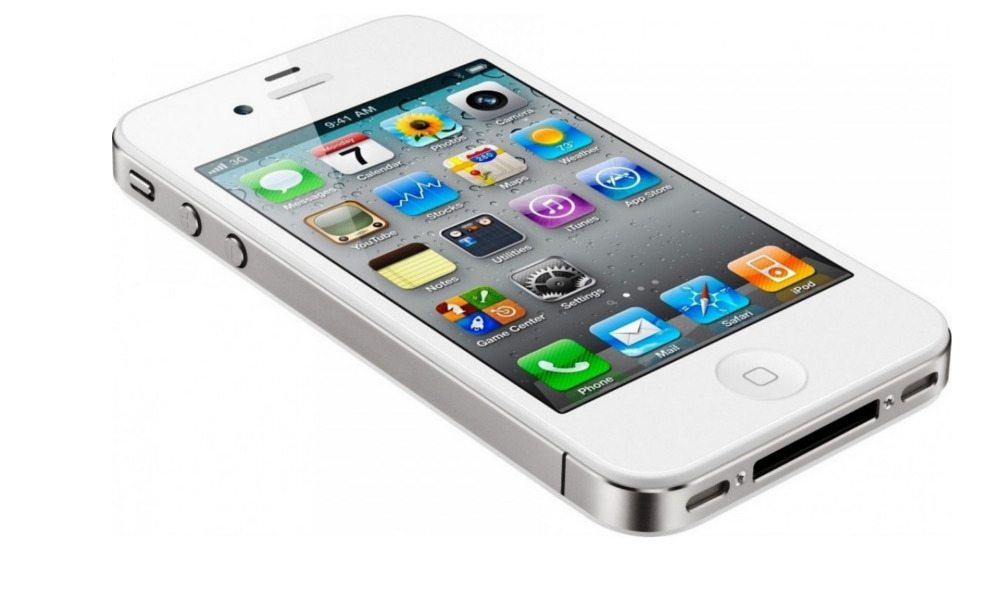
Perhaps the one of the most controversial iPhones, iPhone 4 was infamous for its reception issues dubbed by some as “antennagate.” Reception issues aside, the phone garnered excellent reviews and introduced a number of new features including a better camera with flash, a front facing camera, and a high-definition display.
Evolutionary Features
Front-facing FaceTime camera, Retina Display, LED camera flash, and 3-axis gyroscope.
About iPhone 4
One of the drawbacks to the iPhone 3G and 3GS was their plastic design. It didn’t have the same premium feel that many expect from Apple products. With the iPhone 4, Apple sought to change this using glass and steel—similar to the iPhone X today. Apple claims it was the thinnest smartphone in the world at that time and it was also the first iPhone not exclusive to AT&T customers.
This new design posed some problems. Because the antenna was integrated into a steel band, holding the phone a certain way resulted in lost reception. Apple was forced to provide free bumper cases to alleviate the issue.
The iPhone 4’s biggest improvement was its display. The resolution had been increased to 326 ppi (pixels per inch). Apple markets its high definition displays as “Retina displays” due to the high pixel density which makes it difficult to distinguish individual pixels at a normal operating distance.
But that wasn’t all iPhone 4 Introduced. Its better processor meant iPhone could now multitask and a front-facing camera brought video-calling to the masses with FaceTime.
iPhone 4 Introduced
- External antenna for Wi-Fi, Bluetooth, and Cellular
- Front-facing FaceTime camera
- Retina Display
- CDMA networking (first iPhone available on carriers besides AT&T)
- Gyroscope
- Improved camera with LED flash
8 iPhone 4s
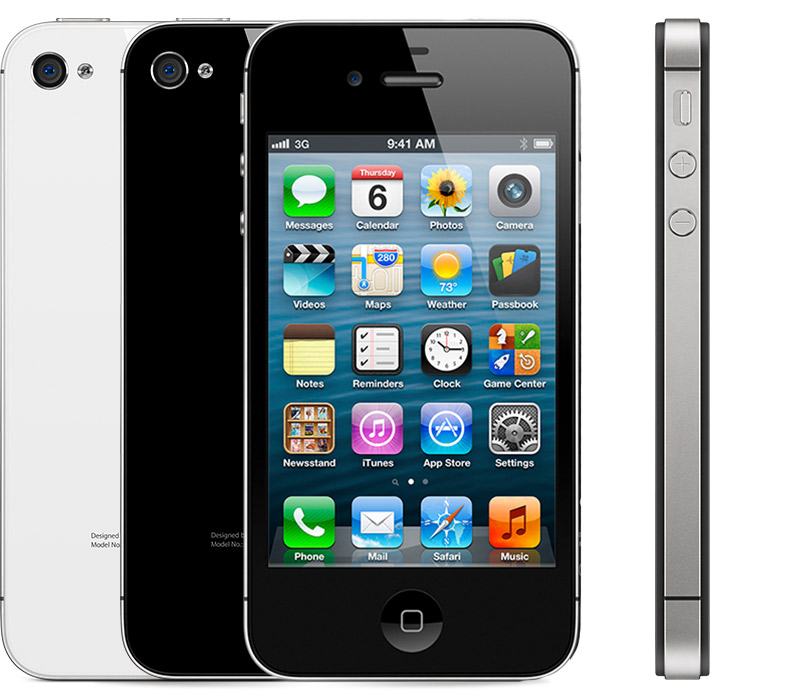
The first iPhone 4s fixed the issues with its predecessor’s antenna, got a speed boost, and introduced us to a familiar friend.
Evolutionary Features
Siri and a dual-core processor.
About iPhone 4s
iPhone 4s was the first iPhone released after the death of Apple cofounder and former CEO, Steve Jobs. It wasn’t much different from the iPhone 4, but its new dual-core processor gave it a big speed boost.
There was however one major introduction that’s stuck with us over the years: Siri. Siri was the first virtual assistant capable of natural language processing (NLP) in a consumer device. Siri has continued to evolve over the years and is now found on Macs, Apple Watches, iPads, and HomePod speakers.
iPhone 4s Introduced
- Dual-core Apple A5 processor
- 8 megapixel camera with support for 1080p video
- Siri
7 iPhone 5
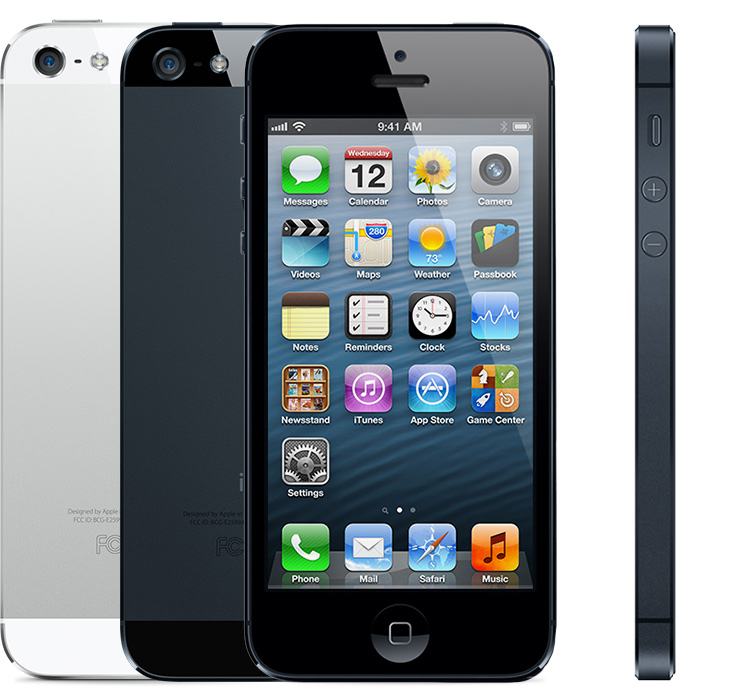
As Android devices became bigger and bigger, Apple held out saying a phone should be easy to use with one hand. With the iPhone 5, Apple opted to make the display taller to provide more screen real estate while keeping it a one-handed device. In addition to a taller screen, the 30-pin connector was replaced with an all-new Lightning port that we still use today.
Evolutionary Features
- Taller display
- Lightning port
- LTE support
About iPhone 5
The iPhone 5 was the last iPhone to be created with the input of Steve Jobs and the first iPhone completely developed under Tim Cook. It featured an aluminum back making it much lighter than its predecessors. iPhone 5 also included a new reversible charging port and connector called Lightning. It has since become standard across iPhones and is even used on iPads, AirPods, Apple Pencil, and even some third-party devices.
iPhone 5 had Apple’s shortest production cycle, lasting only 12 months following the introduction of a replacement model — iPhone 5c — which broke Apple’s usual tradition of selling "old" models at reduced prices. The iPhone 5 had two flaws that had to be addressed by Apple which included failing power buttons and batteries and were resolved by out-of-warranty replacement programs Apple put in place.
iPhone 5 Introduced
- Taller display
- Lightning port
- Video stabilization and camera face recognition
- Apple Maps
- Passbook
- LTE support
6 iPhone 5s
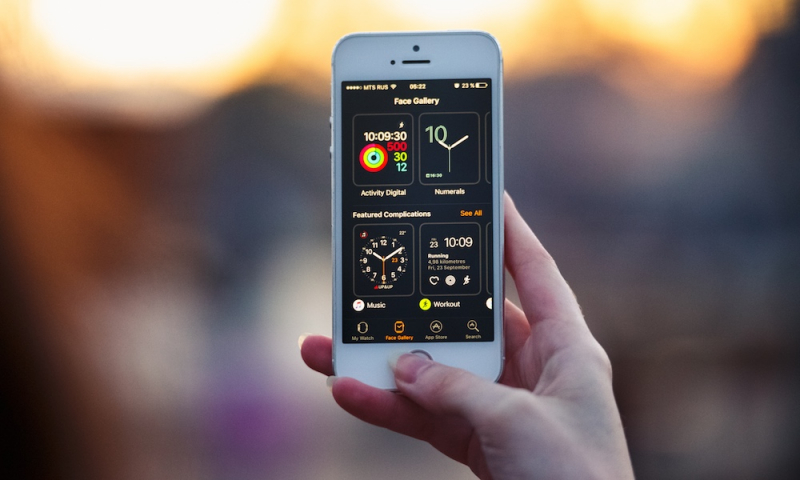
Although the iPhone 5 was removed from the lineup all together, its successor, the iPhone 5s, was almost identical aesthetically. The most noticeable difference was a new home button that included a fingerprint reader called TouchID.
Evolutionary Features
- Touch ID
- AirDrop
- Control Center
About iPhone 5s
The iPhone 5s was released with a lower cost 5c model and ultimately replaced the previous iPhone 5. The phone included an A7 system-on-chip which is a 64 bit processor. It was the first 64 bit processor to be used in an iPhone. The 5s also included a motion coprocessor which collects and stores motion data — such as step counting — even while the device is asleep. The camera was similar to the previous model but did include a larger f/2.2 aperture, slow-motion recording, double LED flash and 10 fps burst mode.
Apple also introduced a new form of biometric security for iPhone called Touch ID. Touch ID is composed of a fingerprint reader below the home button and a secure enclave for encrypting data and keeping it separate from the rest of the system. Despite this extra level of security, Touch ID drew a few concerns from security experts early on. Apple was quick to ease customers by explaining the the lengths they’d gone to to securely store fingerprint data.
In addition to unlocking the device, users can use Touch ID to make purchases from the App Store and iTunes Store. Touch ID is now available on some iPads and Macs and can be used with third-party apps. Data on the secure enclave is never shared with apps or servers (including iCloud).
iPhone 5s Introduced
- More color options (White/Gold)
- Touch ID with secure enclave
- Motion co-processor
- AirDrop
- Control Center
5 iPhone 6/6 Plus
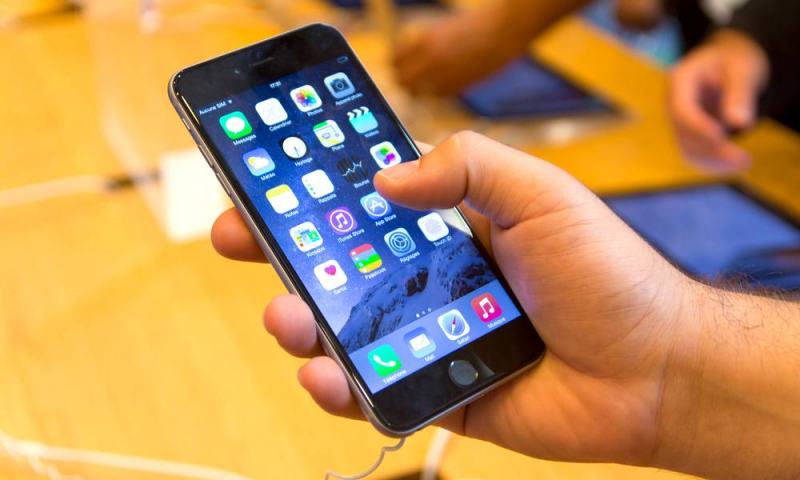
iPhone 6 and 6 Plus were the first iPhones to feature larger displays and NFC payments. The larger 6 Plus model even supported landscape viewing on the home screen and featured split view in some apps such as mail.
Evolutionary Features
- Near-field-communications (NFC) wireless payments
- Larger display
About iPhone 6/6 Plus
As customer demand for larger displays grew, Apple finally stepped up its game and gave customers what they wanted. Instead of just one phone, Apple introduced two new phones at the same time, surprising many fans who had been told a bigger screen was out of the question.
To stick to their promise of one-handed operability, Apple debuted a new feature called Reachability. When the home button was tapped two times, the contents of the display would move down momentarily to allow users to reach items at the top of the screen. Both phones were similar, but the larger iPhone six offered a horizontal home screen, something some users had been requesting.
Additionally, the sleep/wake button was moved to the side and support for NFC payments was added.
Of course, the iPhone 6 wasn’t perfect. A design flaw resulted in some phones bending or breaking when placed in a back pocket. This issue became known as “bendgate.” Some iPhone 6 plus users also experienced defects with the rear camera.
Despite some shortcomings, both the iPhone 6 and 6 plus received positive reviews. People loved their larger sizes, upgraded processors and the ability to pay using NFC.
iPhone 6/6 Plus Introduced
- Larger displays
- NFC payments
- Horizontal home screen (6 Plus)
- Reachability
- Increased storage (128GB)
- Improved front camera (8MP iSight camera)
4 iPhone 6s/6s plus
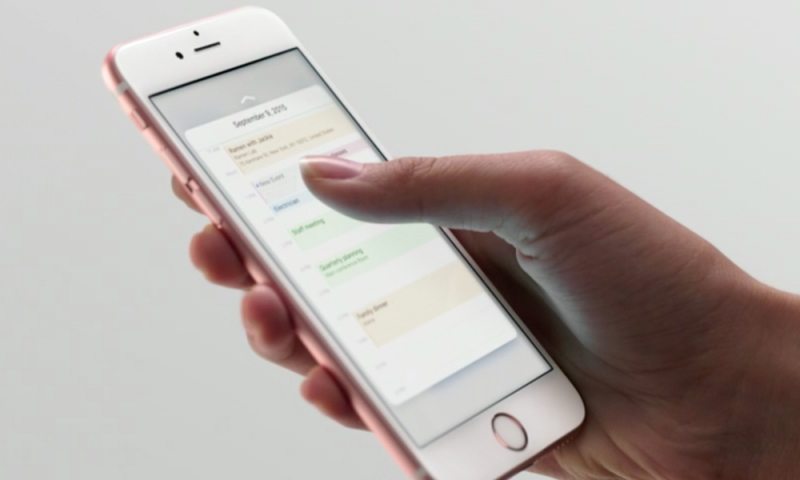
Similar to the previous model aesthetically, the iPhone 6s and 6s Plus added new hardware and software features to improve customer experience. Additions included 3D Touch, “Hey Siri,” and a strengthened chassis to prevent bending.
Evolutionary Features
- “Hey Siri”
- 3D Touch
- Live Photos
- Improved Camera
About iPhone 6s/6s Plus
After the “bendgate” scandal from the previous phones, the similar-looking iPhone 6s was engineered with a strengthened outer shell to prevent bending. Upgraded hardware and an improved camera were praised by most critics.
The phones featured new hardware that allowed Siri to listen for a prompt phrase: “Hey Siri!” This allows users to grab the attention of their virtual assistant without having to finagle with pesky buttons. Additionally, the phones included new displays featuring 3D Touch. This new feature allowed users to press harder or softer on the display to invoke contextual menus and actions.
In association with 3D Touch, Apple introduced Live Photos. Users could now press on their photos and watch them come to life through a three-second moving photo that is created automatically when a photo is taken. Live Photos are made up of two files, a video file and a JPEG.
iPhone 6s/6s Plus Introduced
- Improved camera (12 megapixel and improved recording)
- Live Photos
- 3D Touch
- “Hey Siri”
- New color option (Rose Gold)
3 iPhone 7/7 Plus
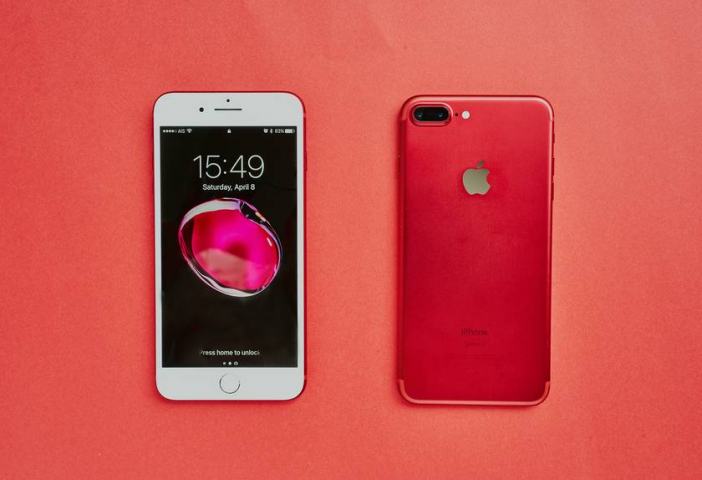
iPhone 7 and 7 plus added a much requested feature, water resistance against splashes and short accidental dunks. In addition, and to the dismay of some users, Apple removed the standard headphone jack.
Evolutionary Features
- Water resistance
- Removed headphone jack
- Telephoto lens
About iPhone 7/7 Plus
A great headphone controversy occurred when Apple made the announcement that its new iPhones wouldn’t include a headphone jack. Instead users could use the Lightning port to connect supported headphones, or use an adapter for their older ones. This helped make the phone remain thin and contributed to its resistance to water and dust.
The larger 7 Plus included a new telephoto lens for the new Portrait effect and 2x optical zoom. In addition, the phone featured new color options including a new “Jet Black” which was extremely glossy.
iPhone 7/7 Plus Introduced
- Water resistance
- Removed headphone jack
- Telephoto lens
- New color options (Matte Black and Jet Black, and later Red)
- 256GB storage option
2 iPhone 8/8 Plus
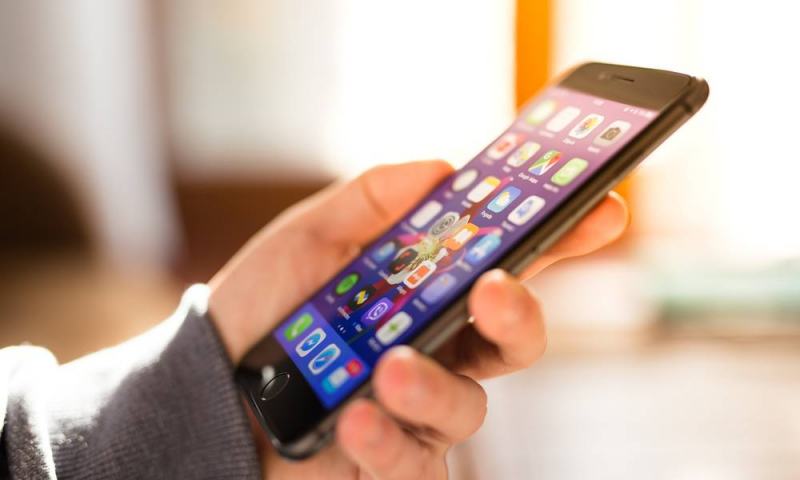
iPhone 8 offers strengthened glass — both front and back — and wireless charging. It features some hardware upgrades and an all new glossy (Product)RED option.
Evolutionary Features
- Qi-standard wireless charging
- A11 Bionic processor
About iPhone 8/8 Plus
The iPhone 8 and 8 Plus didn’t quite get the same reaction of iPhones that came before. But that’s because it is an incremental upgrade, and so another phone — the iPhone X —took most of the spotlight. Despite being similar to the iPhone 7 models, the new iPhones have a glass back, an A11 Bionic processor, feature some new colors, and added Qi wireless charging.
The glass back was added to accommodate the wireless charging, but other than this much anticipated feature the iPhone 8 offers few additional upgrades and has received some criticism over its “aging” design. Apple added a True Tone display to the iPhone 8 that automatically adjusts the screen tint based on the surrounding lights. And iPhone 8 was upgraded with a much faster processor, an improved camera with autofocus, new Stage Lighting effects and Portrait Mode.
iPhone 8/8 Plus Introduced
- True Tone Display
- Wireless charging
- Glass back
- Faster processor
- New color option (Gold)
- Louder dual speakers
1 iPhone X
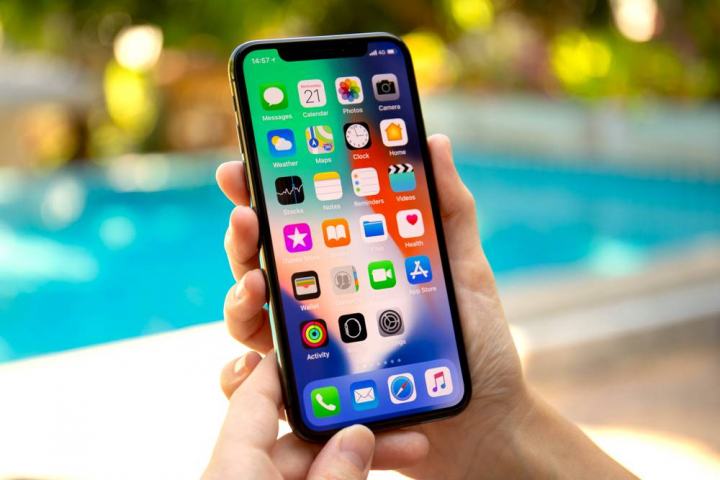
Released on Apple’s 10 year anniversary, the iPhone X (roman numeral for 10) was one of its most anticipated iPhone releases. The phone includes a brand new, edge-to-edge OLED display and to the surprise of some, the removal of the iconic home button. The iPhone X also introduced Face ID as a replacement for Touch ID.
Evolutionary Qualities
- OLED, edge-to-edge, Super Retina display
- Removal of the home button
- TrueDepth Camera with Face ID
- Wireless charging
About iPhone X
Apple’s most expensive phone released to date, the iPhone X is said to have been in development for over five years. Apple surprised users by removing the home button allowing users to control the phone using gestures. Face ID was also introduced with the iPhone X, which scans a user’s face to unlock the phone and make purchases.
The unique TrueDepth camera array does more than unlock the phone, users can also animate emoji with their face. These new animated emoji are aptly named “Animoji.” Animoji react to users’ facial expressions and can be used as stickers or sent as video clips in iMessage.
Although the phone features Qi wireless charging, some users have complained about slow charging speeds. Face ID has worked better than some expected, but some people still miss Touch ID. That being said, Apple calls the iPhone X the future and it's a clear path of where future iPhones are headed.
iPhone X Introduced
- Edge-to-edge OLED display
- TrueDepth Camera with Face ID
- Animoji
- Wireless charging
- Removal of home button
- True Tone display
- Better optical image stabilization
? The Next iPhone, 10+ Years of Evolution
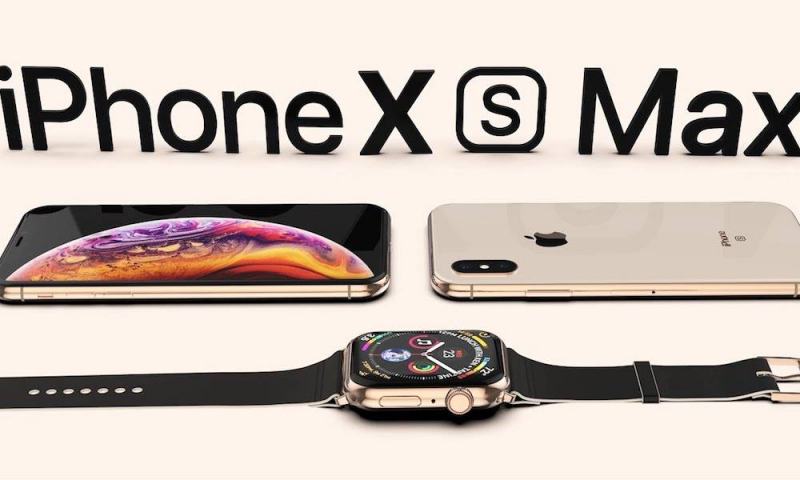
Apple’s next big event is on Wednesday and you can expect three new iPhones. So what’s next? Where does the iPhone evolve from here? While we don’t know exactly what Apple will do next, we’re excited to find out.
After a decade of evolution, the current iPhones come in four different display sizes, more than seven colors, and in multiple materials and designs. With so many choices and features, there's now an iPhone for everyone.
What features do you want to see come to the next iPhone? What are your favorite iPhone features? Which is your favorite iPhone model? Let us know in the comments and on social media.
